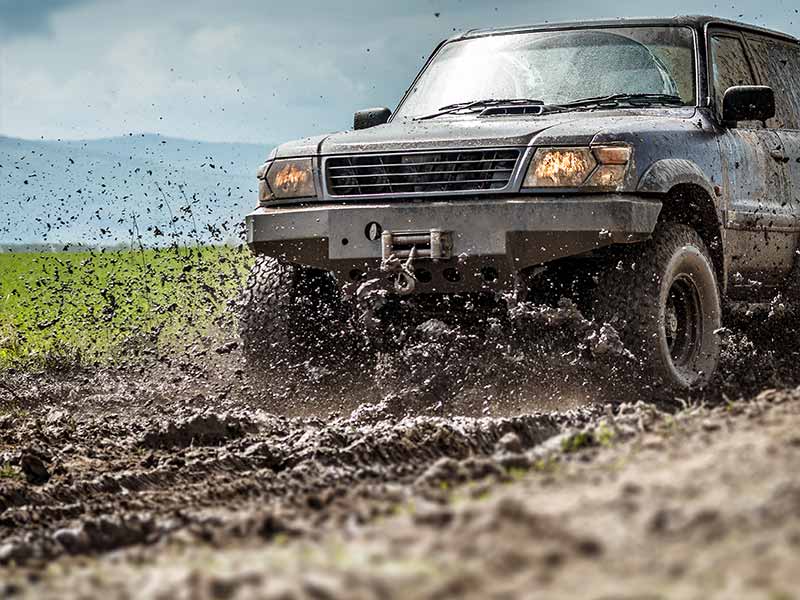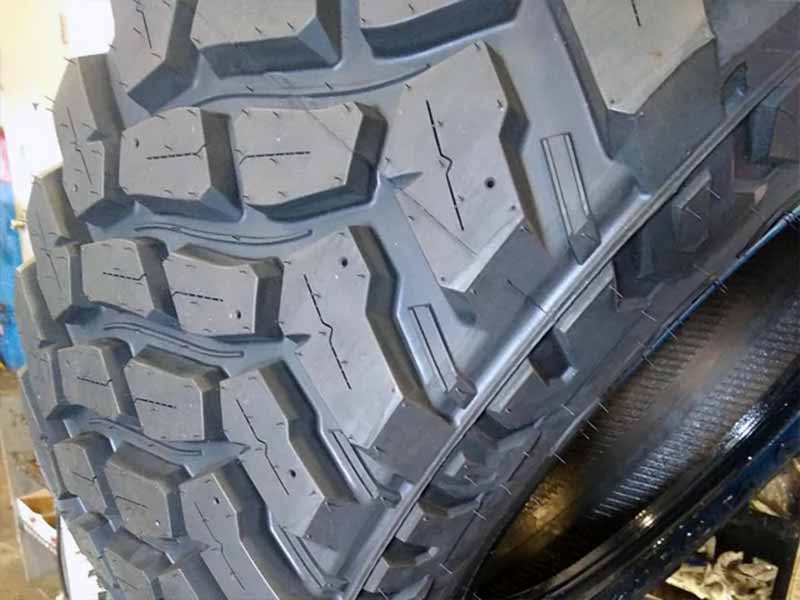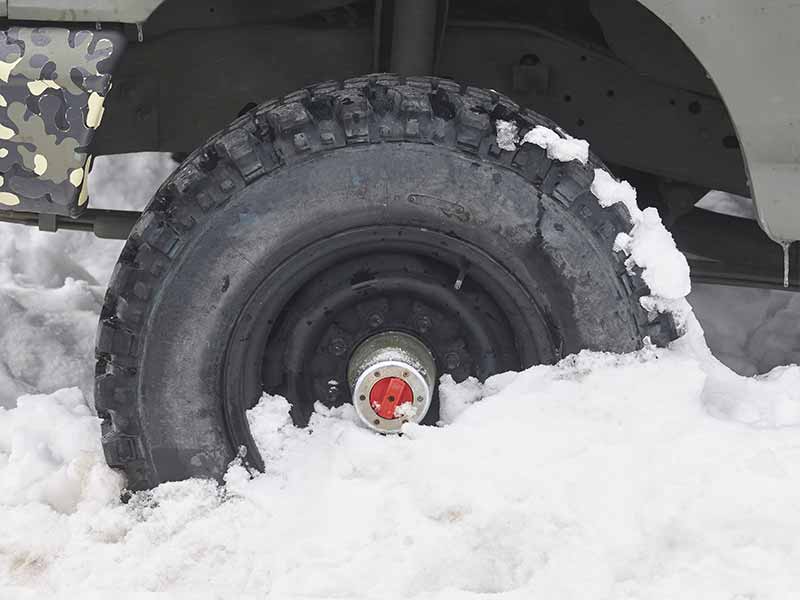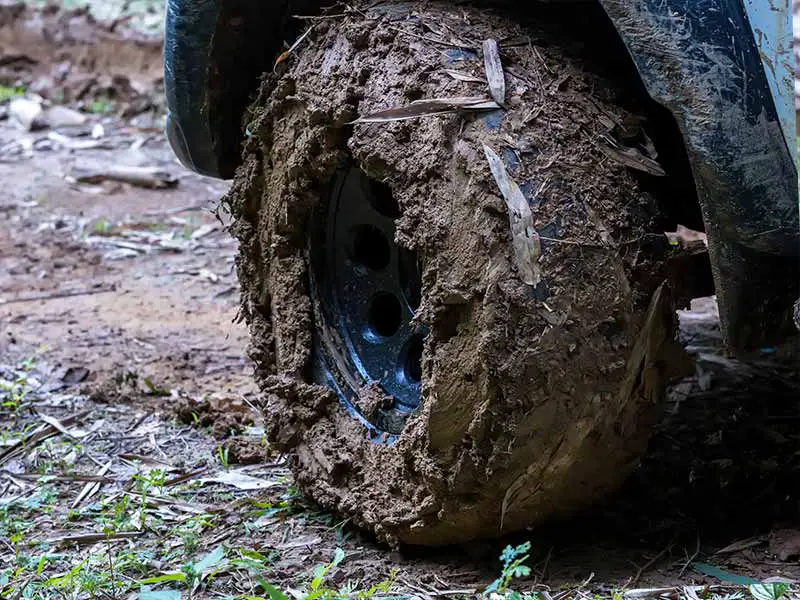Navigating through muddy terrains and rough trails can be a thrilling adventure, but what about the everyday drive on regular roads? If you’ve ever wondered whether those rugged mud tires are suitable for your daily commute on pavement, you’re not alone.
Are Mud Tires Good For Daily Driving?
Mud tires are designed primarily for off-road conditions, providing excellent traction in muddy and rough terrains. However, when used for daily driving on pavement, they may wear out faster, produce more noise, and reduce fuel efficiency.
In this article, we’ll delve deep into the world of mud tires, comparing them with all-terrain tires, understanding their performance on pavements, assessing their longevity, exploring their efficacy in snowy conditions, and evaluating their impact on fuel economy.
Let’s take a closer look.

What are Mud Tires?
Mud tires, often called “mud terrain tires” or simply “MT tires”, are a special type of tire designed mainly for off-road use. They are made to help vehicles drive through muddy, slippery, and rough terrains. Let’s break down their features and why they stand out:
Tread Design
- Deep Grooves: Mud tires have deep grooves, which are the spaces between the raised parts of the tire. These deep grooves help the tire grip the ground better, especially in muddy conditions.
- Large Blocks: The raised parts of the tire, called tread blocks, are bigger and wider on mud tires. This design helps the tire get a better grip on uneven surfaces.
- Self-Cleaning: The way mud tires are designed, they can push out mud, dirt, and debris as they move. This means they don’t get clogged up with mud as easily as other tires might.
Strong Sidewalls
Mud tires have thicker and stronger sidewalls. The sidewall is the side part of the tire. A strong sidewall means the tire can handle bumps and hits better, especially when driving on rough terrains.
Purpose
- Off-Road Performance: These tires are best for driving on surfaces that are not smooth, like dirt roads, muddy paths, and rocky trails. They are not mainly designed for regular city roads or highways.
- Traction in Muddy Conditions: The main job of mud tires is to give vehicles good traction in muddy conditions. Traction means how well the tire can grip or hold onto the ground. With good traction, vehicles can move through mud without getting stuck.
Not Just for Mud
Even though they are called “mud tires”, they are also good for other off-road conditions. This includes:
- Wet and slippery surfaces
- Sandy areas
- Rocky paths

Performance of Mud Tires on Pavement
Mud tires are designed mainly for off-road conditions, but what happens when they’re used on regular roads or pavements? Let’s explore their performance on such surfaces.
Grip and Traction
- Mud Tires on Pavement:
- They can grip the road, but not as well as tires made for pavement.
- The deep grooves and large tread blocks, which are great for mud, might not provide the best traction on smooth roads.
Wear and Tear
- Faster Wear:
- Mud tires can wear out faster on pavement compared to off-road terrains.
- The aggressive tread design can get worn down quickly when used on hard surfaces like concrete or asphalt.
Noise Levels
- Increased Noise:
- Mud tires can be noisier on pavements.
- The design that makes them great for off-road can cause a humming or buzzing sound on highways.
Handling and Comfort
- Rougher Ride:
- Driving with mud tires on regular roads might feel bumpier.
- They are not designed to give a smooth ride on highways or city streets.
Safety Considerations
- Reduced Wet Performance:
- On wet pavements, mud tires might not drain water as efficiently as regular road tires. This can lead to a higher risk of hydroplaning, where the tire loses contact with the road because of a layer of water.
Cost Implications
- Increased Fuel Consumption:
- Using mud tires on pavements might lead to higher fuel consumption. This is because they create more resistance or drag on smooth roads.

Longevity of Mud Tires on Pavement
Mud tires are built tough for challenging terrains, but how do they fare in terms of lifespan when used primarily on pavements? Let’s dive into this topic.
Factors Affecting Longevity
- Driving Habits:
- Aggressive driving, like fast starts and hard stops, can wear out mud tires faster on pavements.
- Tire Pressure:
- Not maintaining the right tire pressure can lead to uneven wear. This can reduce the lifespan of mud tires, especially on hard surfaces.
- Road Conditions:
- Even on pavements, conditions vary. Rough or damaged roads can cause more wear and tear on mud tires.
Comparison with Other Tires
- Mud Tires:
- When used on pavements, mud tires might not last as long as they would on off-road terrains. The aggressive tread design can wear down faster on hard surfaces.
- Regular Road Tires:
- Designed specifically for pavements, these tires generally last longer on city roads and highways compared to mud tires.
- All Terrain Tires:
- Being versatile, all terrain tires can offer a balance. They might last longer on pavements than mud tires but not as long as regular road tires.
Maintenance for Longer Life
- Regular Checks:
- Frequently inspect mud tires for signs of uneven wear, cuts, or damages, especially if used on pavements.
- Rotations:
- Rotating the tires regularly can help in even wear, extending their life.
- Proper Inflation:
- Always ensure the tires are inflated to the recommended pressure. This helps in reducing unnecessary wear.

Mud Tires in Snowy Conditions
Snow and ice present unique challenges for any tire. Let’s examine how mud tires perform when faced with snowy conditions.
Tread Design and Snow
- Deep Grooves:
- The deep grooves in mud tires can help in gripping loose snow, similar to how they grip mud.
- Large Tread Blocks:
- These can provide traction in deep snow. However, on icy surfaces, the large blocks might not grip as effectively as specialized winter tire treads.
Wet and Icy Surfaces
- Wet Traction:
- Mud tires are designed to expel mud and water, which can be beneficial in slushy conditions.
- Ice Grip:
- Mud tires might not have the best grip on pure ice. They lack the siping (tiny slits in the tread) that winter tires have, which improves traction on icy roads.
Temperature and Rubber Compound
- Flexibility in Cold:
- Mud tires are made of a tougher rubber compound designed for rough terrains. In very cold temperatures, this rubber might not be as flexible as the softer rubber used in winter tires. A less flexible tire might not grip snowy roads as effectively.
Safety Considerations
- Braking:
- On snowy or icy pavements, mud tires might not provide the shortest braking distances compared to winter tires.
- Handling:
- In snowy conditions, vehicles with mud tires might not handle as predictably as those with winter tires.
When to Use Mud Tires in Snow
- Occasional Snow:
- If you encounter snow occasionally and it’s not too deep or icy, mud tires might manage adequately.
- Heavy Snow and Ice:
- For regular driving in areas with heavy snowfall and icy conditions, specialized winter tires are a safer choice.

Fuel Economy and Mud Tires
Fuel economy, or how efficiently a vehicle uses fuel, can be influenced by the type of tires you use. Let’s explore how mud tires impact fuel consumption.
Resistance and Drag
- Rolling Resistance:
- Mud tires, with their aggressive tread design, can create more rolling resistance on pavements. This means the engine has to work a bit harder to move the vehicle, leading to more fuel consumption.
- Aerodynamic Drag:
- The larger and wider profile of mud tires can also increase aerodynamic drag, especially at highway speeds. This can further reduce fuel efficiency.
Weight of the Tire
- Heavier Build:
- Mud tires are generally built tougher and heavier than regular road tires. A heavier tire can reduce fuel efficiency because it takes more energy to rotate.
Impact on Gas Mileage
- Reduced Mileage:
- Due to the factors mentioned above, vehicles using mud tires might experience a reduction in gas mileage. This means you might get fewer miles per gallon compared to using regular road tires.
Highway Driving
- Higher Speeds:
- At highway speeds, the effects of rolling resistance and aerodynamic drag become more pronounced. So, if you’re using mud tires and do a lot of highway driving, you might notice a more significant drop in fuel efficiency.
Cost Implications
- Increased Fuel Costs:
- Over time, the reduced fuel efficiency can lead to higher fuel costs. If you’re considering mud tires for daily driving, especially on highways, it’s essential to factor in these potential extra costs.

Mud Tires vs. All Terrain Tires
When choosing tires, it’s important to pick the right type for your needs. Two common choices for off-road driving are mud tires and all terrain tires. Let’s understand the differences between them:
What are All Terrain Tires?
All terrain tires, often called “AT tires”, are designed to be versatile. This means they can be used on many different types of surfaces. They are a mix between regular road tires and off-road tires like mud tires.
Key Differences
- Tread Design:
- Mud Tires:
- Have deep grooves for better grip in muddy conditions.
- Tread blocks are bigger and wider for rough terrains.
- Designed to push out mud and not get clogged.
- All Terrain Tires:
- Have a mix of deep and shallow grooves.
- Tread blocks are medium-sized, making them good for both smooth and rough roads.
- Can handle mud, but not as well as mud tires.
- Mud Tires:
- Purpose:
- Mud Tires:
- Mainly for off-road conditions like mud, sand, and rocks.
- Not the best choice for regular city roads or highways.
- All Terrain Tires:
- Good for both city roads and off-road paths.
- Versatile and can handle a mix of driving conditions.
- Mud Tires:
- Noise and Comfort:
- Mud Tires:
- Can be noisier on highways because of their aggressive tread design.
- Might feel bumpy on smooth roads.
- All Terrain Tires:
- Quieter and smoother on highways compared to mud tires.
- Offer a more comfortable ride on regular roads.
- Mud Tires:
Resources
Below are some links you may find helpful when learning about tires
- Mud terrain vs. all terrain tires: Pros and cons – Discount Tire
- Can I daily drive mud tires? – Trail Built
Final Thoughts
While mud tires excel in off-road conditions, their performance on pavements can be compromised in terms of wear, noise, and fuel consumption. Additionally, while they can manage in occasional snow, they aren’t a substitute for winter tires. And when it comes to fuel economy, the aggressive design of mud tires can lead to increased fuel costs over time. In essence, if you’re considering mud tires for daily pavement driving, it’s essential to weigh their strengths against their limitations.
Good luck and happy motoring.





